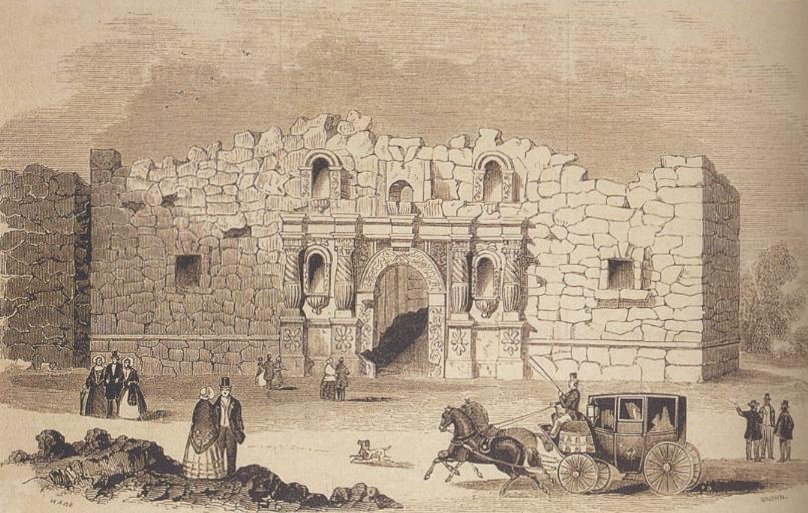The state of Texas has a long history of independence. With that in mind, many people wonder how Texas became a part of the U.S. and why it is known as the Lone Star state.
So let’s dive into the history of Texas and how it has shaped this large state’s culture.

A Part of Mexico
With nearly two hundred years of being a part of the United States, it might surprise you that Texas was once a part of Mexico. For years, the state of Texas was its northernmost border. Yet, that didn’t mean there was no civil unrest.
After years of dissatisfaction with Mexican government policies, Texan leaders met for two different conventions, in 1832 and 1833.
During these conventions, resolutions were adopted that requested reforms from the Mexican government. These included tariff reductions, lifting immigration restrictions, funding primary schools, and finally, allowing Texas to be a separate state within the Mexican republic.
The immigration issue was subject to intense debate. Originally, Mexico encouraged immigration from the United States to boost the population in Texas.
Anglo-Americans from the United States were called Texians, distinguishing them from Mexicans. Eventually, however, Mexico saw this immigration as a threat and, thus, put restrictions into place.
In 1829, Mexico required all new immigrants to convert to Catholicism and outlawed slavery. American immigrants ignored these requirements and kept coming, thus being deemed illegal immigrants.
They didn’t act like Mexican citizens, maintaining deep ties to the United States. Despite bans on slavery, increased taxes, and other enforcement efforts, Mexico did not convince settlers to remain loyal.
The law of 1830 banned all immigration from the United States and made it illegal to bring in more enslaved people.
It should be no surprise that Mexico rejected all of its resolutions, determined to keep the status quo. However, citizens of Texas didn’t feel that the Mexican government was meeting their needs, so they began a fight for their independence in October 1835.
Texas Revolution
The battles were bloody. Several famous battles are well known in history, including the Battle of the Alamo. This revolution lasted six months, ending in April 1836 at the Battle of San Jacinto.
The flag representing this new country, the Republic of Texas, was a single white star on a blue background. Variations of that original flag and star are littered throughout the history of Texas.

The James Long Expedition carried a flag similar to this in 1819 when they attempted to free Texas from Spain.
In 1836, Texas was an independent country after winning its sovereignty from Mexico. Austin artist Peter Krag originally designed the red, white, and blue flag associated with Texas for a mere $10. But, of course, that original flag incorporated a white star for the Lone Star state.
But the leadership of Texas saw the benefits of being part of the United States, so they sought to be annexed instead of remaining an independent nation.
That process took over ten years, particularly as the debate over slavery became more heated throughout the U.S. Eventually, in 1845, Texas was an official state of the Union. Yet, that peaceful period didn’t last long.
The U.S. and Mexico went to war over Texas, particularly where it ended. The United States claimed the border was the Rio Grande, but Mexico said it was the Nueces River. Today, the Rio Grande is the border between these two countries.
Texas became a state that legalized slavery when it was annexed. So when the Civil War began, it seceded alongside the Confederate States of America.
Eventually, the Confederate states were reunited with the United States. Yet, despite this history, Texas has always been associated with independence and living on your terms.
How does that play into its role as the Lone Star state?
The Tradition of the Lone Star State
Texas is the second largest state in the U.S., which includes the second largest population. If you get into your car to drive across Texas, it will take about 13 hours from north to south and 11 hours going east to west. Yet even before it was a country of its own or the great state of Texas that we all know today, it was associated with a single star.
In 1821, Henry Smith was the governor of Texas when it was a province of Mexico. He realized that Texas needed a seal. His overcoat had a five-pointed button, which he cut off and used to stamp the documents he signed. Thus, the Lone Star state had its first association with the star that would eventually define it.
The Lone Star is on the state seal and its flag. Although the Lone Star state started as a nickname for this huge state with its variety of traditions and cultures, the legislature never formally made the Lone Star state its legal motto or nickname until 2015.
Despite that lack of formal recognition, the phrase can be found on license plates, keychains, and more. Just stop in a local gift shop in Texas, and you will find many items proclaiming that you are in the Lone Star state.
The original Lone Star was part of its Republic of Texas flag, but over time, the meaning behind that star has changed. For instance, some individuals believe the Lone Star state is meant to signify Texans’ wish to be a different state from all the others in the Union.
Others note that it represents how Texas was the only state brave enough to demand rights from Mexico and win its independence.
Today, the Lone Star state continues to be uniquely independent. The star has come to be associated with pride, defiance, and a willingness to go their way, even if it means standing up for ideals that are not considered mainstream.
Citizens of the Lone Star state pride themselves on their rugged individualism, which has continued to be a defining part of the Texas culture.
Even though the state was at one time part of six different countries (Spain, France, Mexico, the Republic of Texas, the United States, and the Confederate States of America), Texas and its Lone Star spirit have never disappeared.

